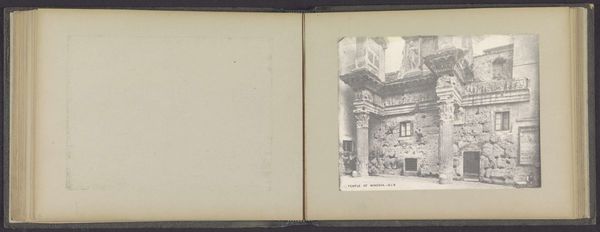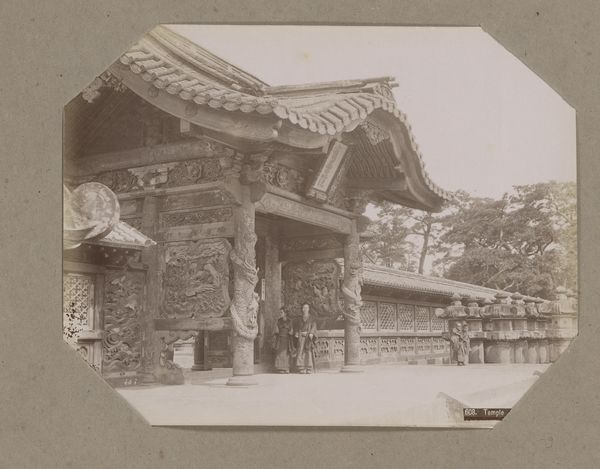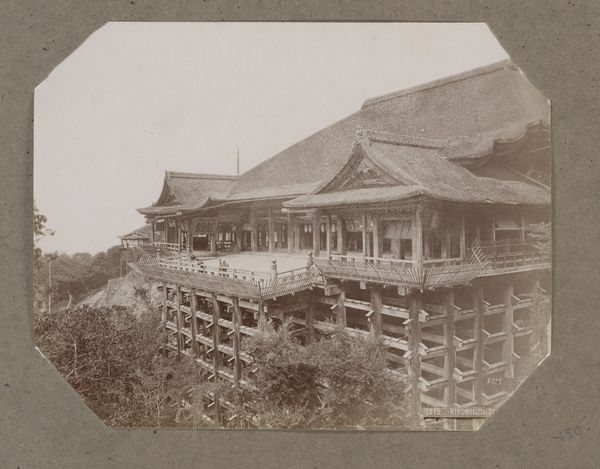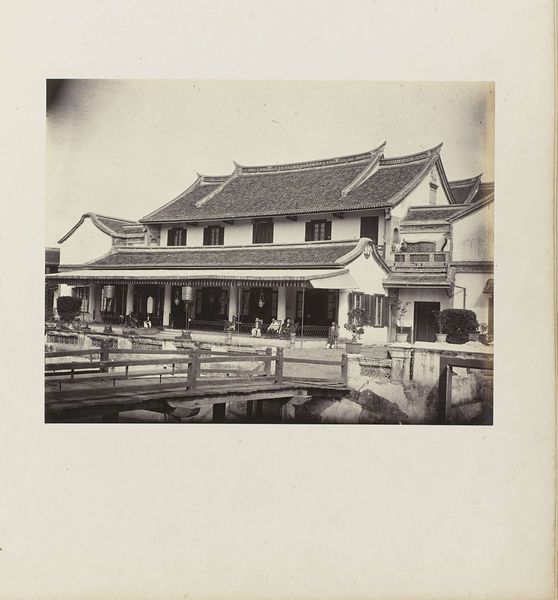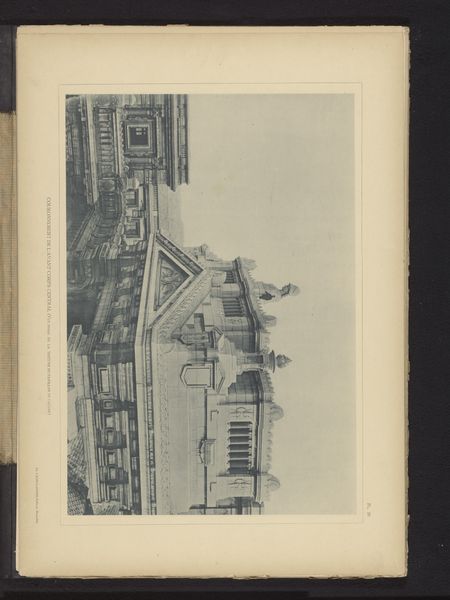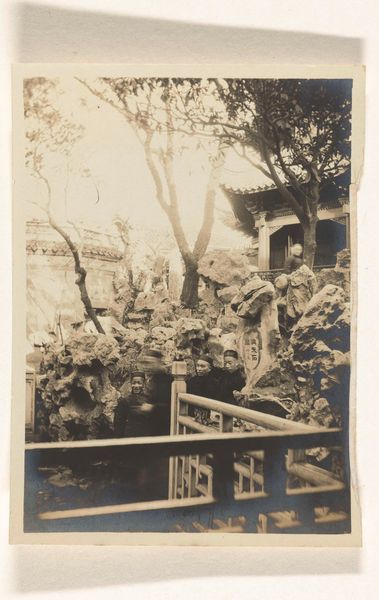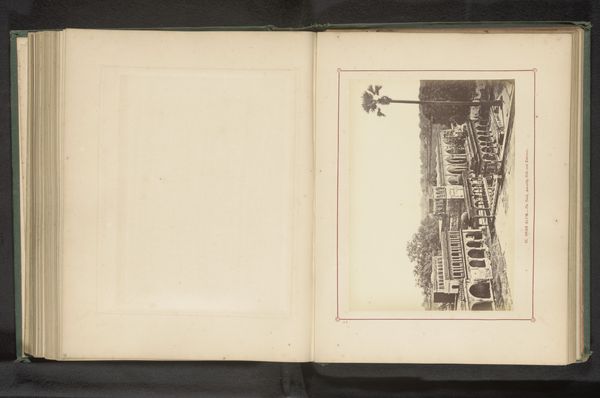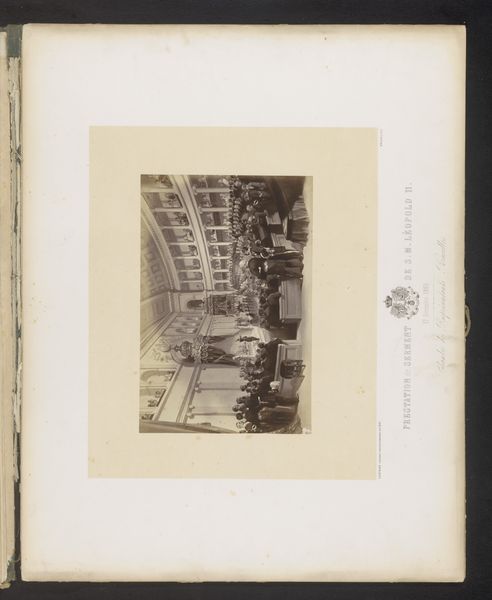
Gezicht op het paviljoen van Frans Indochina tijdens de Wereldtentoonstelling van 1900 in Parijs 1900
0:00
0:00
photography, site-specific
#
aged paper
#
light pencil work
#
typeface
#
hardpaper
#
photography
#
personal sketchbook
#
journal
#
fading type
#
script
#
orientalism
#
stylized text
#
site-specific
#
columned text
Dimensions: height 115 mm, width 85 mm
Copyright: Rijks Museum: Open Domain
Curator: This vintage photograph by Paul Lucena captures the pavilion of French Indochina at the 1900 World's Fair in Paris. Editor: Oh, it's sepia-toned and dreamlike. Like climbing a memory, those stairs. What's fascinating is how faded and fragile it seems, hinting at vanished grandeur and maybe, a slightly skewed colonial gaze. Curator: The image serves as an important document, showing the architectural style adopted by the French to represent their colony. We see these massive stairways and statuary meant to inspire awe, showcasing materials extracted from the region and the craftsmanship, possibly both local and French, that went into constructing such a building for temporary display. Editor: There's a certain poetry in its disposability. All that labor and material wealth, reduced to a ghostly photograph. Did anyone involved imagine it would fade to this sepia whisper? I’m intrigued by how this fleeting construction aimed to portray a permanent, almost mythical Indochina. There's ambition there, and a real kind of longing too, right? Curator: Precisely! These World's Fair pavilions were temporary stages for complex cultural and economic performances. This photo offers critical insights into how France constructed and disseminated its image of Indochina to a global audience and the politics surrounding such constructed imagery. The Orientalist themes at play here were, after all, carefully crafted for consumption, using both material resources and, let's face it, unequal labor conditions to make such constructions happen. Editor: And today, gazing at it, we are left to sift through those layers of history, colonialism, artistry, decay. Makes you consider what remains when the spectacle has vanished and all we’re left with are echoes and shadows. Curator: Indeed, examining such artifacts compels us to deconstruct not just what they show, but how their very existence—material, economic, photographic—is intrinsically tied to the dynamics of power. Editor: Absolutely. A photo like this—it makes you feel like an archeologist of emotion, piecing together narratives from fragments. Curator: It also underscores photography’s important role in recording, shaping and then transforming memory over time. A single image reflecting massive shifts. Editor: Leaving us to keep digging, asking, and hopefully learning from these beautiful ghosts.
Comments
No comments
Be the first to comment and join the conversation on the ultimate creative platform.

